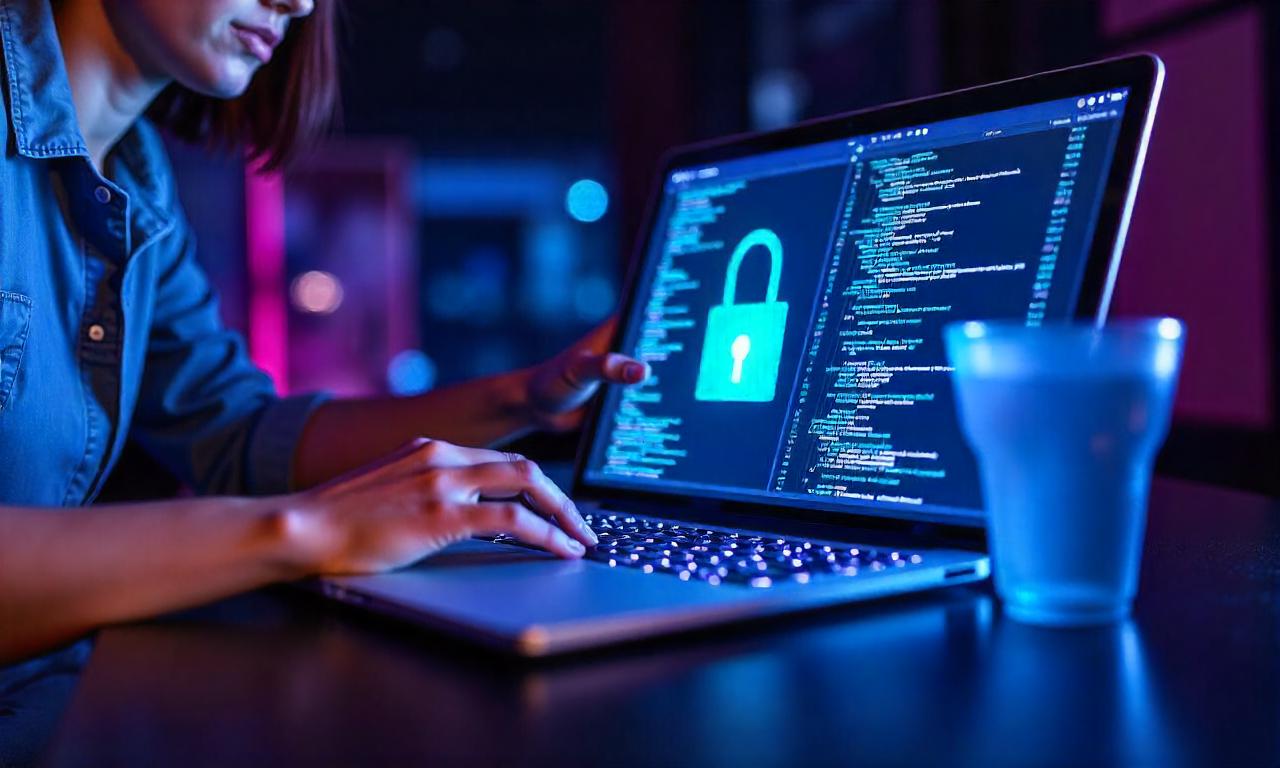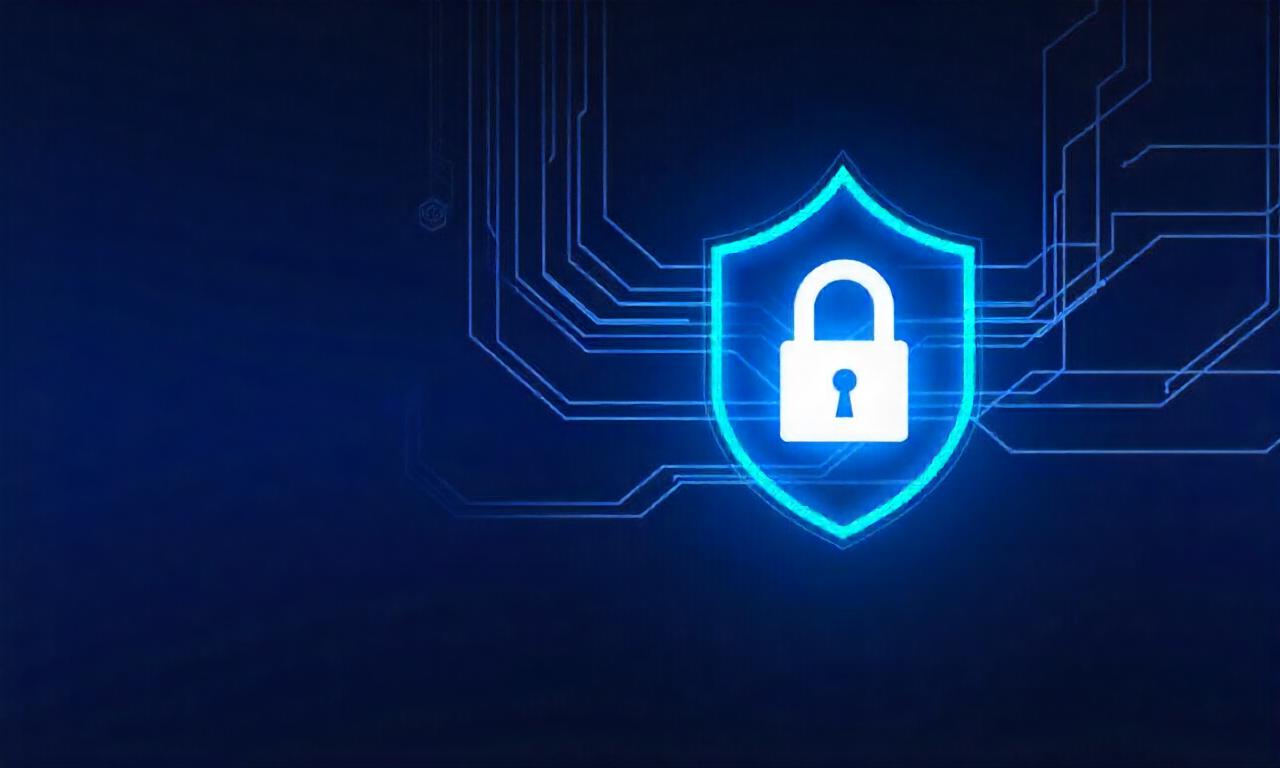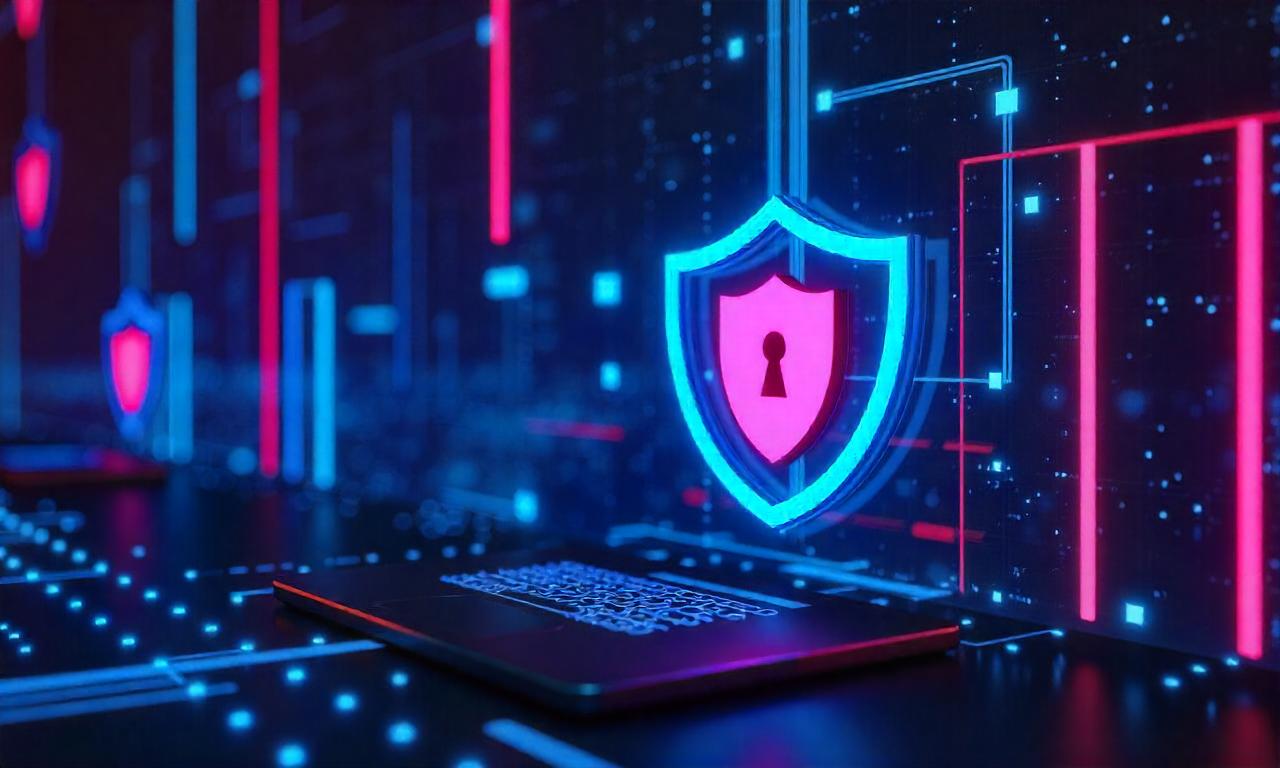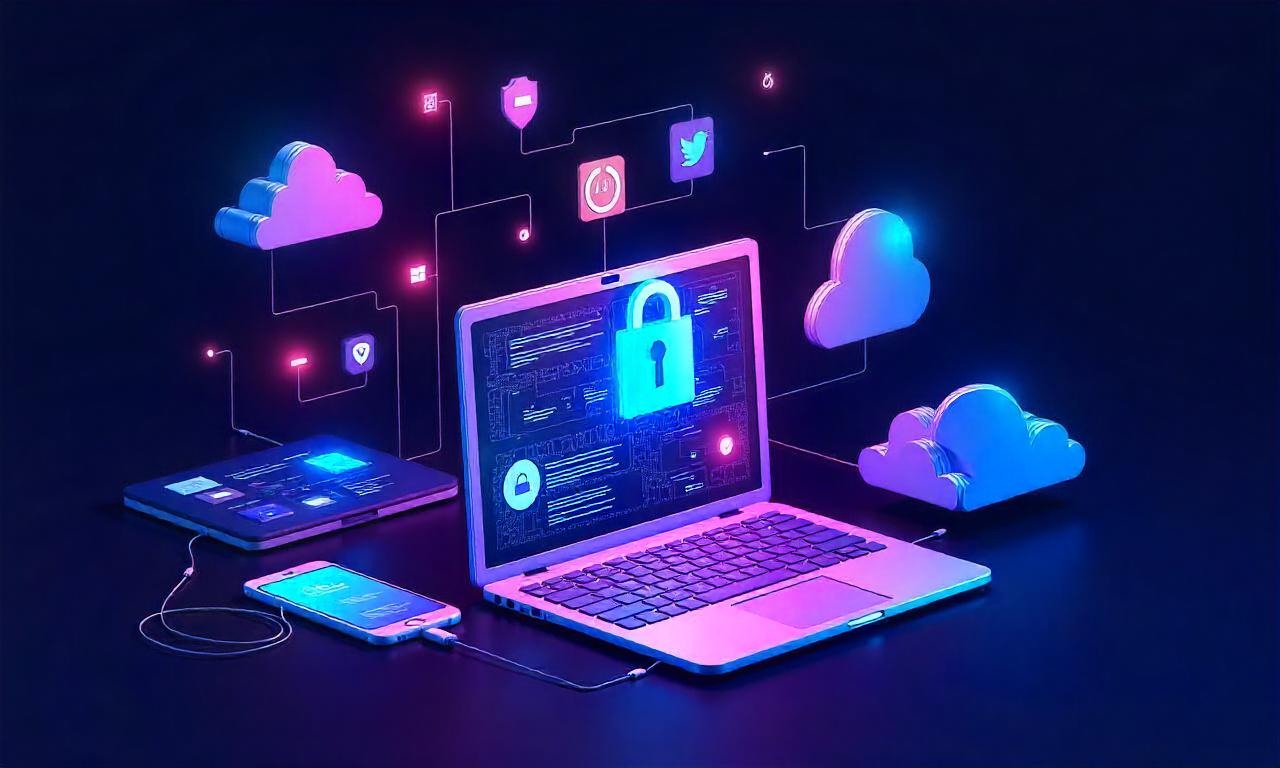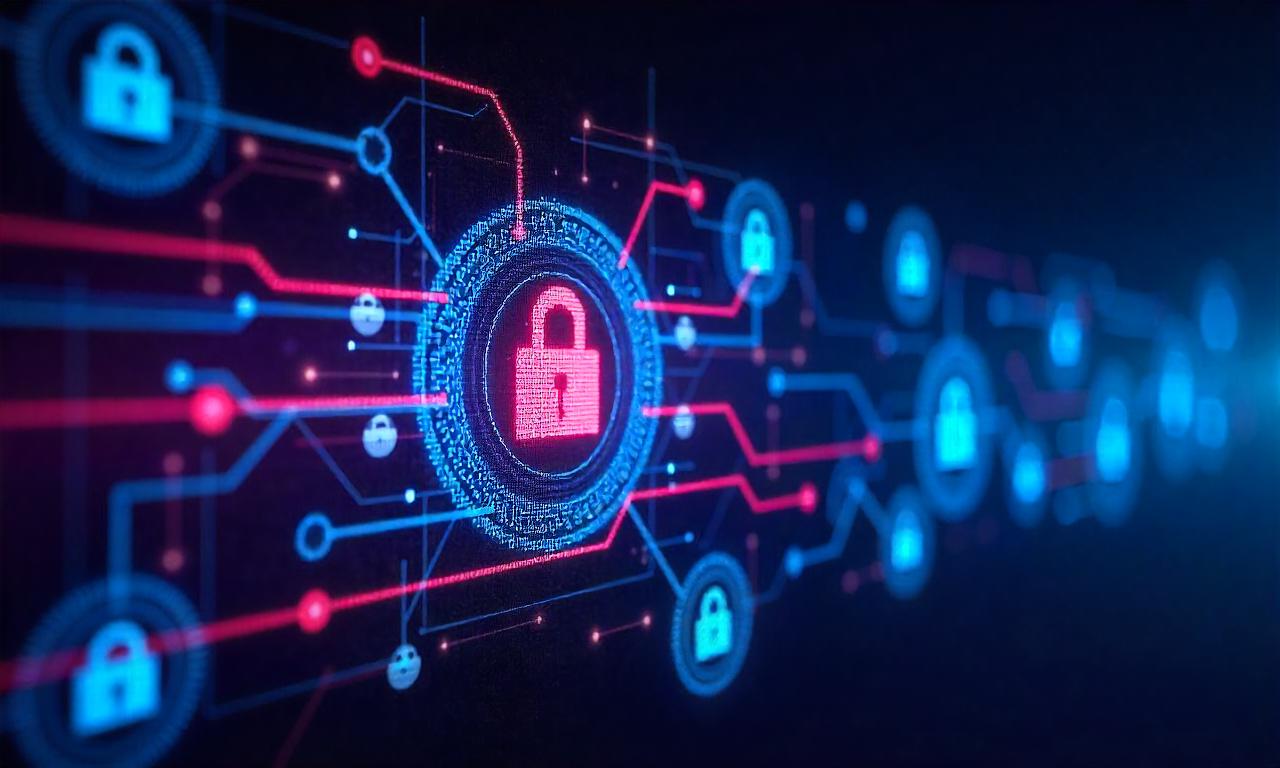Cybersecurity Best Practices for Remote Workers Today
The way we work has changed, but cyber risk hasn’t taken a day off. Today’s distributed teams, personal devices, and home networks widen the attack surface—making it essential to adopt cybersecurity best practices for remote workers. This guide turns complex security guidance into practical actions you can apply immediately, blending the latest trends (like phishing-resistant MFA and zero trust) with evergreen principles (like least privilege and secure backups). Whether you’re a freelancer, part of a startup, or a member of a global enterprise, the steps below will help you reduce risk without slowing down productivity.
Table of Contents
ToggleThe Remote-Work Threat Landscape Today
The expanding attack surface in a hybrid world
Remote work dissolves the traditional network perimeter. Employees access sensitive systems from home offices, coworking spaces, and while traveling. Each location introduces variables—shared Wi‑Fi, consumer-grade routers, unmanaged devices—that attackers can exploit. The result is a larger, more complex attack surface that requires more than just a VPN and antivirus.
Attackers adapt quickly. They aggregate leaked credentials from data breaches, exploit unpatched routers and IoT devices, automate password spraying against corporate SaaS, and craft targeted social engineering campaigns. Even small configuration errors—like open cloud storage buckets or overly permissive access—become footholds for intrusion.
To counter this, organizations should assume compromise is always possible. A zero trust mindset—verifying explicitly, limiting access, and continuously monitoring—helps reduce blast radius when misconfigurations or human errors occur. The goal is not to build an unbreakable wall, but to ensure that when something fails, it fails safely.
People remain the primary target
Most breaches still begin with a human decision—clicking a link, approving a fake MFA prompt, reusing a password, or sending data to a spoofed colleague. Social engineering thrives in remote environments where quick decisions happen in chat, email, and collaboration tools, often across multiple devices.
The best defense is layered: well-tuned email security, phishing-resistant authentication, and continuous micro-training. Security awareness isn’t a once-a-year lecture—it’s a set of habits reinforced by simulations, just-in-time nudges, and clear reporting paths. When employees know that “something seems off” is enough reason to pause, risk drops dramatically.
Leaders should normalize reporting near-misses without blame. A culture where employees feel safe raising concerns—“I approved an MFA prompt I didn’t initiate”—allows security teams to respond quickly, limiting damage and learning from real events.
Compliance and data residency in a borderless workplace
Remote work complicates compliance. Data may cross borders as employees roam, and local privacy laws (GDPR, CCPA, HIPAA, etc.) impose strict requirements for storage, access, and breach notification. Shadow IT—unsanctioned apps used to “get work done”—can silently move sensitive data into systems that don’t meet regulatory standards.
Minimize risk by documenting where data lives, tightening default sharing settings, and enforcing data loss prevention (DLP) for email and collaboration suites. Ensure contracts with third-party vendors include security obligations and data residency clauses. Finally, rehearse incident communication: who is notified, when, and how, to meet legal timelines while keeping customer trust.
Secure Devices and Operating Environments
Keep devices healthy with proactive maintenance
Unpatched systems are a common breach vector. Make patching routine and fast. Enable automatic updates for operating systems, browsers, and critical apps. For high-risk issues, patch within 72 hours when practical, and within a week as a general rule.
Disk encryption (e.g., BitLocker, FileVault) should be mandatory for laptops and mobile devices that may be lost or stolen. Pair this with enforced screen locks, automatic timeouts, and secure boot to prevent tampering. Where possible, use hardware security features like TPM/secure enclave.
Don’t forget peripherals and home infrastructure. Printers, smart assistants, and especially routers run firmware that needs updates. A compromised router can intercept traffic or redirect users to malicious sites—even if their laptops are fully patched.
Endpoint protection that goes beyond antivirus
Traditional antivirus is no longer enough. Modern threats leverage living-off-the-land techniques, fileless malware, and legitimate tools. Adopt Endpoint Detection and Response (EDR) to monitor behavior, detect anomalies, and isolate infected endpoints quickly.
Configure EDR policies for remote contexts: restrict execution of unsigned scripts, block USB storage by default, and require admin approval for new kernel extensions or drivers. Combine EDR with application allowlisting for critical roles, so only vetted software runs on endpoints.
Visibility is vital. EDR telemetry should feed into a central log or SIEM solution so analysts can correlate events across laptops, mobile devices, and cloud services. The sooner you detect unusual behavior—impossible travel, mass file access, atypical OAuth grants—the smaller the damage.
Manage BYOD safely with MDM and clear boundaries
Bring Your Own Device (BYOD) can boost productivity but blurs lines between corporate and personal data. Use Mobile Device Management (MDM) or Mobile Application Management (MAM) to enforce minimum standards—encryption, lock screen, OS version—and to enable selective wipe of corporate data if the device is lost or an employee leaves.
Separate corporate and personal contexts. Containerization keeps work apps and data isolated, safeguarding privacy while maintaining control over sensitive information. Communicate policies clearly: what the company can and cannot see, what’s required to access data, and how to get support without exposing personal content.
When in doubt, provide a corporate-managed device for high-risk roles. The marginal cost is small compared to the potential fallout of a breach originating from an unmanaged endpoint.
Strong Identity, Access, and Authentication
MFA everywhere—and move toward passwordless
Passwords alone are weak, especially when reused across services. Enable Multi-Factor Authentication (MFA) on every account, prioritizing admin and email first. Prefer phishing-resistant methods like FIDO2 security keys or platform authenticators over SMS codes, which can be intercepted via SIM swaps.
As you mature, adopt passwordless sign-in for key applications using passkeys or security keys. This reduces credential phishing, eliminates password resets, and improves user experience—critical for busy remote workers juggling many apps.
To prevent MFA fatigue attacks, enable number matching or verification context in push prompts, and require re-authentication for sensitive actions (e.g., changing MFA methods, downloading large data sets).
Least privilege and role-based access control
Overprivileged accounts amplify breach impact. Apply least privilege: users should only have access to what they need, for as long as they need it. Implement role-based access control (RBAC) to standardize permissions and reduce ad-hoc exceptions.
Use just-in-time (JIT) access for administrative tasks, granting elevated rights temporarily with approval workflows. Periodically review entitlements—quarterly for general staff, monthly for admins—and revoke stale access. Automate offboarding to disable accounts the moment employment ends.
Map access to data classification. Sensitive data (e.g., PII, financials, source code) deserves additional gates—step-up MFA, device trust checks, or stricter session timeouts.
SSO and session management for safer convenience
Single Sign-On (SSO) centralizes identity and reduces password sprawl. By integrating SaaS apps with SSO, you gain better control over provisioning, deprovisioning, and auditing. Pair SSO with device posture checks: only allow logins from compliant devices or known locations.
Session security matters. Configure idle timeouts, re-authentication for high-risk actions, and conditional access policies that evaluate user, device, app, and risk signals in real time. Revoke sessions when suspicious activity is detected, and alert users when new devices sign in.
Invest in visibility: audit who signed in, from where, and whether access is changing over time. These logs often provide the first clues of account takeover.
Network and Data Protection for Home Offices
Harden home Wi‑Fi and routers
Home routers are the new branch office edge. Change default admin credentials, update firmware regularly, and disable WPS. Use WPA3 or at least WPA2 with a strong, unique passphrase. Separate work devices on a dedicated SSID or VLAN if your router supports it.
Turn off unnecessary services like UPnP and remote administration. If remote admin is needed, restrict it to secure methods and known IPs. Prefer DNS providers with built-in filtering and DNSSEC validation to reduce exposure to malicious domains.
Educate employees on safe device placement: avoid plugging work laptops directly into insecure IoT hubs. If possible, use a small, company-provided firewall or secure gateway at home to enforce corporate policies consistently.
VPN versus ZTNA: choosing the right fit
Traditional VPNs create a tunnel to the corporate network, often granting broad access once connected. Zero Trust Network Access (ZTNA) narrows exposure by granting application-level access after continuous verification. For many modern SaaS-heavy environments, ZTNA improves both security and user experience.
Here is a simplified comparison to guide your choice:
| Capability | VPN (Network-centric) | ZTNA (App-centric, zero trust) |
|---|---|---|
| Access scope | Broad network segments | Specific apps/resources only |
| Trust model | Implicit after connect | Explicit, continuous verification |
| User experience | Can be slower, all traffic tunneled | Faster, direct-to-app connections |
| Lateral movement risk | Higher if compromised | Lower due to microsegmentation |
| Deployment fit | Legacy apps, on-prem networks | Cloud/SaaS, modern hybrid stacks |
Some organizations run both: VPN for legacy systems that can’t be easily modernized, and ZTNA for everything else. Whichever you choose, enforce MFA, device posture checks, and logging across the board.
Encrypt data and back it up like your business depends on it
Encryption at rest and in transit is non-negotiable. Ensure TLS for all web services, use full-disk encryption on devices, and encrypt sensitive documents stored in cloud drives. For chat and calling, prefer solutions with end-to-end encryption for highly confidential discussions.
Backups are your safety net against ransomware and accidental deletion. Follow the 3-2-1 rule: three copies of data, on two different media, with one copy offline or immutably stored. Test restoration regularly—backups you can’t restore are just expensive archives.
Apply data classification and retention. Not every file needs to live forever; reducing your data footprint narrows your attack surface and simplifies compliance.
Phishing, Social Engineering, and Human Resilience

Spot the patterns that scammers rely on
Phishing preys on urgency, fear, and curiosity. Emails or messages that demand immediate action—“Your account will be closed in 1 hour”—are red flags. Check sender domains carefully, hover over links, and never enter credentials on pages reached from email links unless you’ve verified the destination independently.
Modern attacks are multi-channel. Watch for SMS (“smishing”), voice calls (“vishing”), and collaboration-platform DMs. Attackers increasingly use generative text to create convincing messages; they also register lookalike domains that differ by a letter or use homoglyphs.
When unsure, slow down. Verify via a second channel you control, such as a known phone number or your company’s official chat directory. It’s better to delay a task than to compromise an account.
Collaborate safely and avoid shadow IT
Remote teams thrive on flexibility, but unsanctioned tools can hide risk. Before adopting a new app for file sharing or project management, confirm it meets security standards: encryption, SSO support, data residency, and admin controls.
Use least-privilege sharing in collaboration suites: default to “specific people,” set expiration dates on links, and review external shares regularly. Avoid sending credentials or API keys in chat; use a secrets manager or vault instead.
Security can be an enabler. Curate a secure app catalog that meets team needs so people don’t feel compelled to go rogue. Provide a fast path to request new tools, with a documented review process.
Build habit loops that make security second nature
Behavior change sticks when it’s easy and rewarding. Incorporate micro-learning—60-second tips, just-in-time reminders, and short simulations—into daily workflows. Celebrate good catches and share anonymized lessons learned.
Create friction where it counts. Require step-up verification for risky actions, but don’t pepper users with unnecessary prompts. Align signals with risk and provide clear guidance when blocks occur: explain why and how to proceed safely.
Finally, make reporting effortless. A “Report Phish” button, a dedicated Slack/Teams channel, or a short code for security help reduces barriers. The more signals your security team receives, the faster they can respond and tune defenses.
Monitoring, Incident Response, and Legal Hygiene
Telemetry for a perimeter-less world
In remote environments, endpoints and cloud apps are your sensors. Centralize logs from identity providers, EDR, email security, cloud platforms, and critical SaaS. Correlate events to detect account takeovers, data exfiltration, and unusual OAuth grants.
Prioritize high-signal detections: mass file downloads, impossible travel, MFA push floods, new inbox rules forwarding externally, and privilege escalations. Alert fatigue is a risk—tune rules to minimize noise and use automation to enrich and triage events.
Data retention policies should balance investigation needs with privacy laws. Keep enough history to reconstruct incidents, but avoid over-collection that creates unnecessary exposure.
Incident response designed for remote teams
Write and test an incident response (IR) playbook tailored to remote contexts. Define roles, escalation paths, and communication channels that work when everyone is distributed. Pre-approve tools like remote isolation through EDR, and have a backup communication plan if email or chat is compromised.
Run tabletop exercises quarterly. Simulate common scenarios: ransomware on a remote laptop, OAuth token theft in a SaaS app, or a compromised router at home. Document decisions, gaps, and improvements. Build a contact tree for legal counsel, cyber insurance, and law enforcement where appropriate.
Speed is everything. The faster you can identify, contain, and eradicate a threat, the less costly it becomes. Practice makes “fast” realistic.
Privacy, regulation, and cross-border nuances
Remote workers might access data from multiple jurisdictions. Clarify where personal data is processed and stored, and configure geo-restrictions where possible. Use data processing agreements (DPAs) with vendors to ensure contractual alignment on privacy and security.
Map your regulatory obligations. If you handle healthcare data, HIPAA rules apply; if you serve EU residents, GDPR matters; if you accept cards, PCI DSS is in scope. Train staff on the basics and create quick-reference guides for high-risk processes like handling subject access requests (SARs).
Prepare for breach notification timelines. Keep templates and contacts ready, and coordinate with legal early. Transparent, timely communication protects trust and meets statutory requirements.
Actionable 30-Day Plan and Checklist
Days 1–7: Establish foundations
- Enable MFA for email, SSO, and admin accounts; prefer security keys or passkeys.
- Turn on full-disk encryption, automatic OS/browser updates, and screen locks.
- Harden home routers: change admin password, update firmware, enable WPA3/WPA2.
- Inventory devices and apps; remove unused accounts and revoke stale shares.
- Create a simple incident reporting channel and “Report Phish” button.
In the first week, aim for quick wins with high impact. Identity and patching are your best early-return investments. Communicate clearly with users about what’s changing and why.
Review email security settings, including anti-spoofing records (SPF, DKIM, DMARC). Even basic alignment can significantly reduce domain impersonation risk.
Days 8–21: Mature controls
- Deploy EDR across managed devices; set policies for isolation and USB blocking.
- Roll out SSO to priority SaaS apps with conditional access and device posture checks.
- Implement a backup strategy following the 3-2-1 rule; run a test restore.
- Define data classification and DLP rules for email and cloud storage.
- Launch micro-training: 5-minute modules on phishing, MFA fatigue, and safe sharing.
During this phase, integrate logs into a central view and set a baseline of alerting. Target “quick detect” scenarios like mass downloads or inbox forwarding rules. Tune to reduce false positives.
Begin drafting your remote-first IR playbook. Include how to quarantine compromised accounts, rotate credentials, and notify stakeholders.
Days 22–30: Optimize and test
- Run a tabletop exercise simulating a remote endpoint compromise.
- Pilot ZTNA for a subset of apps, or tighten VPN split-tunneling and ACLs.
- Conduct an access review—remove excessive permissions and enable JIT elevation.
- Finalize BYOD/MDM policies; enable selective wipe and minimum standards.
- Publish a one-page “Remote Security Essentials” guide for all staff.
By the end of 30 days, you should have layered defenses, visibility into risky behavior, and a practiced response. From here, iterate quarterly: reassess risks, refresh training, and expand passwordless adoption.
Quick Reality Check: What The Data Suggests
While numbers vary by industry and source, recent industry reports such as the Verizon Data Breach Investigations Report (DBIR) and IBM Cost of a Data Breach consistently highlight the same themes: phishing and stolen credentials are top initial access vectors; average breach costs continue to rise; and MFA plus strong identity controls significantly cut risk.
Key takeaways to anchor your strategy:
- Stolen credentials and phishing remain dominant entry points.
- MFA—especially phishing-resistant MFA—dramatically lowers account takeover.
- Mean time to detect and contain incidents correlates with total cost and impact.
Use these trends not as fear, but as focus: invest where the data says it matters most.
Frequently Asked Questions (FAQ)
Q: What is the single most impactful step I can take today?
A: Enable phishing-resistant MFA (security keys or passkeys) on email and SSO, especially for admin accounts. This blocks the majority of credential-based attacks and is relatively quick to deploy.
Q: Do I still need a VPN if we use mostly SaaS?
A: Maybe not for every use case. ZTNA can provide app-level access with continuous verification and better user experience. Many teams keep a VPN for legacy systems and adopt ZTNA for modern apps.
Q: Are SMS one-time codes secure enough?
A: They’re better than no MFA, but vulnerable to SIM-swap and interception. Prefer app-based TOTP, push with number matching, or best of all, FIDO2 security keys/passkeys.
Q: How often should we run phishing simulations?
A: Monthly light-touch simulations with coaching work well. Pair them with just-in-time education and celebrate successful reports to build a positive culture.
Q: What about personal devices used for work?
A: Use MDM/MAM to enforce basics (encryption, screen lock, minimum OS version) and to enable selective wipe of corporate data. For high-risk roles, issue managed devices.
Q: How do we secure home Wi‑Fi for employees?
A: Update router firmware, change default admin credentials, use WPA3/WPA2 with a strong passphrase, disable WPS/UPnP, and create a dedicated SSID for work devices.
Q: Is passwordless realistic for small teams?
A: Yes. Modern identity providers support passkeys and security keys with minimal overhead. Start with admin and finance roles, then expand to all users.
Conclusion
Remote work is here to stay—and so is cyber risk. The difference between vulnerable and resilient teams comes down to execution on a few fundamentals: phishing-resistant MFA, least-privilege access, secure and monitored endpoints, hardened home networks, encrypted data with tested backups, and a practiced incident response. Layer these controls, align them with a zero trust mindset, and bake security into daily habits, not just policies.
You don’t need to do everything at once. Start with identity and patching, add visibility and EDR, mature access with SSO and ZTNA, and keep improving through training and testing. By focusing on outcomes—fewer successful phishing attempts, faster detection, smaller blast radius—you’ll safeguard productivity and trust in a remote-first world.
Summary (English):
This comprehensive guide outlines practical, evergreen cybersecurity best practices for remote workers. It explains today’s remote-work threats, then provides step-by-step guidance on securing devices with patching, encryption, and EDR; strengthening identity with MFA, passwordless, SSO, and least privilege; protecting networks and data via hardened home Wi‑Fi, VPN/ZTNA choices, and robust backups; and reducing human risk through phishing awareness and safe collaboration. It also covers monitoring, incident response tailored for distributed teams, compliance considerations, and a 30-day action plan. The key takeaway: prioritize phishing-resistant MFA, least privilege, endpoint visibility, and tested backups, then iterate with zero trust principles to maintain strong security without sacrificing productivity.


